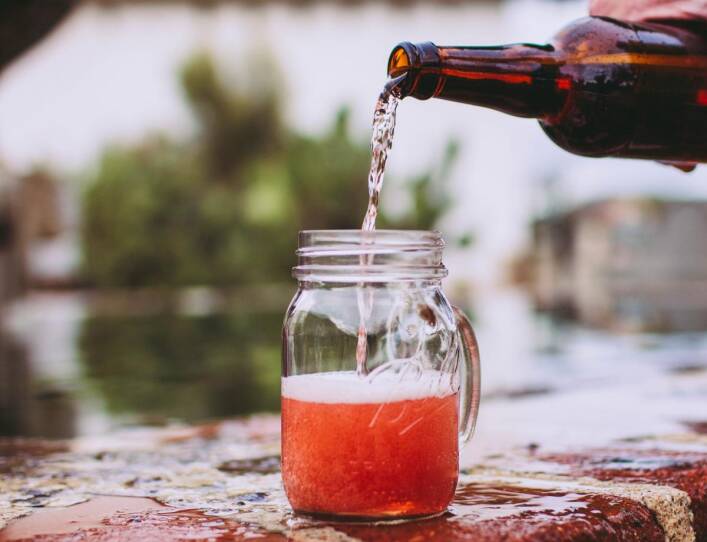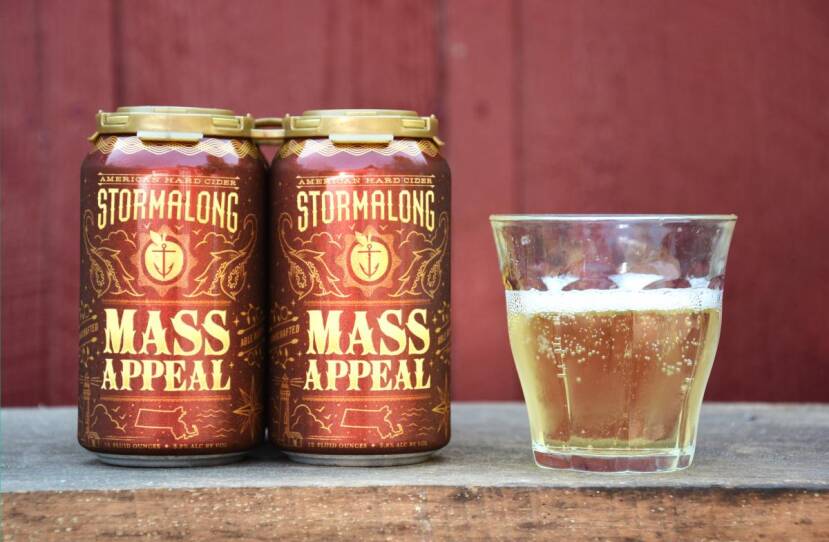Americans just don’t get cider. We think little more of it than a sweet drink made from apples. Sometimes it’s alcoholic. Sometimes it’s cloudy. Or not. We kinda don’t care. Cider isn’t taken very seriously. Usually relegated to being a last-resort ordering choice, cider has been fighting for legitimacy in the United States for a long time. Sadly, it’s a totally misunderstood beverage.
Poor cider.
We need to treat it with more of the respect it deserves. Like most relationships, the key to success is understanding. Knowing the basics about cider - what it is as much as what it isn’t - will go a long way in helping all of us embrace a drink the rest of the world has been enjoying for centuries. Let’s get to it.

What is cider? What isn’t cider?
Here in New England, defining cider can be a little tricky. To the rest of the drinking world, the word ‘cider’ refers to fermented (and therefore alcoholic) apple juice.
To us, ‘cider’ is that deliciously sweet and cloudy stuff we buy by the jug after we finish apple picking somewhere, usually alongside a couple dozen cider donuts that don’t survive the ride home. We call the boozy stuff “hard cider”.
By definition, cider is made with apples. They have the requisite sugars, acidity and tannins to make a balanced and delicious adult beverage. Making cider is simplicity itself - press the juice from ripe apples and ferment it.
Other fruits can be used to similar effect, although they can’t be called cider. Pears are a popular choice because of their similar qualities and mild flavor, although it’s a bit harder to make than apple cider. Fermented pear juice is called perry. Plum juice can also be transformed into a carbonated, refreshingly unique sipper known as jerkum.
An important distinction to make is the difference between proper cider and mixing another fruit’s juice with cider. Actual cider is only fermented apple juice. Perry is only fermented pear juice. Pear cider is a mix of fermented pear and apple juices. Apricot cider, cherry cider, and others are made this way as well.
Various alcoholic beverages can be made with apples, but can’t be called cider.
For example, Calvados is an apple brandy made in Normandy, France. That same area is responsible for the amazing beverage pommeau - a blend of young Calvados and fresh apple juice that is aged for up to three years in oak barrels, resulting in a rich and flavorful drink reminiscent of a light dessert wine.
To the north, Quebec is known for their cidre de glace. Only in production for a couple decades or so, ‘ice cider’ is made with apples left exposed to the weather until the dead of winter. The pressed juice is so thick and heavy, it yields a viscous treat with a glorious balance of syrupy sweetness and bracing acidity.
Speaking of sweetness...

What about sweetness?
Most people think of all cider as being sweet. While that is certainly the case in some examples, most ciders are much less sweet than you may expect and can even be bone-dry. It’s all in the hands of the cider maker.
Fermentation is basically allowing yeasts to consume the sugars in a liquid, in this case apple juice. Our main reward from this process is the creation of ethyl alcohol - the booze in wine, beer and cider. (The process also creates organic gasses that can be trapped to provide carbonation.) If all the sugars are converted into alcohol, the resulting beverage is naturally dry. If some of the sugars are left unfermented, the drink will have some level of residual sweetness to it. Cider makers can control this process, deciding just how much sugar they want to remain in the final product.
Ciders are grouped into different categories based on sweetness. The categories are dry, semi dry (also called semisweet), and sweet. When examining cider packaging you might also see these descriptors in French, which would read as brut, demi-sec and doux.
It’s important to remember that residual sweetness doesn’t always mean the drink will taste sweet. Small amounts of remaining sugars will give the cider (or wine) a fuller feel in your mouth, and will act as a counterpoint to the acidity and alcohol in the drink. As the amount of sugars increases, they start to become noticeable.
How do you enjoy cider?
It seems almost silly to discuss how cider is best enjoyed. Chill up a can or bottle, open ‘er up and drink, right? Well...no. If that’s your game plan, you’re doing it wrong. Like crafted beer and wine, well-made cider has a lot to offer your senses. You only have to treat it right. To keep it simple, treat a bottle of cider the same way you would a bottle of wine.
A quality bottle of cider is happiest when it’s served at the correct temperature. If your cider is tannic and dry, serve it at cellar temperature, around 55F. Sweeter versions like it more on the chilled side to keep the sweetness from running amok. Don’t have a cellar? No problem. Keep your cider in the fridge and take it out fifteen minutes before you want to drink it. That is just enough time for the bottle to warm up slightly, but is still plenty cool.
Believe it or not, crafted cider is happiest when served in a white wine glass. The shape of the vessel allows all the aromas and flavors to really shine! It also allows the drinker to bask in the opulence of the gorgeous hues ciders display.
As for how much to drink...well, that’s up to you. Typically, cider has a little bit horsepower than wine. A full-sized bottle of cider (750ml) is usually just enough for two to share over dinner. If you get a little too ambitious and open a bottle you can’t quite conquer right then, saving cider is pretty easy. Use a cork or one of those fancy rubber Champagne stoppers and keep the bottle in the fridge. A bottle that is half-full or more should last another week or so. (As I’ve been told, that is. I’ve never had one live that long.) Opened ciders won’t spoil but they will oxidize with time, giving off coppery aromas and flavors. If a bottle does get to that point, don’t toss it! Use it to braise pork or steam mussels.
Here’s to hoping you give cider, real cider, a shot. Or two. Hell, try a bunch of them. We’re in the right region. We’re in the right season. Today’s domestic cider market offers a broader range of styles than ever before, and there’s something for everyone. I’m sure you’ll find a cider you can’t resist. One that is simply...a-peeling. (Ha!)




